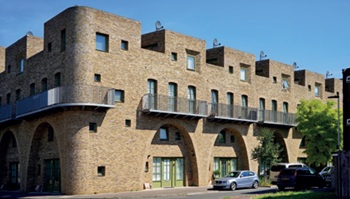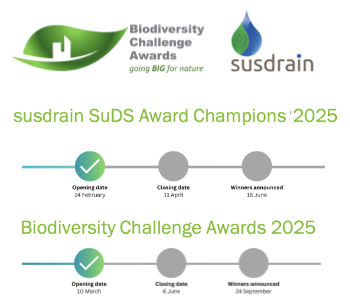The EPC consultation in the context of changes to the NCM
Contents |
[edit]  Context to the consultation
Context to the consultation
In December 2024 the UK government published a consultation seeking views on the reform of the Energy Performance of Buildings (EPB) framework, for England and Wales (Scotland and Northern Ireland being devolved matters). Established under the Energy Performance of Buildings (England and Wales) Regulations 2012, the EPB Framework serves as a foundational tool for promoting carbon reduction across the UK's building stock, encouraging energy efficiency improvements in existing homes and commercial properties.
The consultation covers both Energy Performance Certificates (EPCs) and Display Energy Certificates (DECs) and is impacted by changes to the way EPCs are calculated, which is currently via the National Calculation Method (NCM) for all new and existing buildings and in the future via the planned Home Energy Model (HEM).
What is also relevant for an EPC or DEC, is the building type that is required to have one and the validation period, and also the minimum level of performance that is expected now or in the future.
[edit] The current consultation on EPCs (and DECS)
The consultation is published by MHCLG and DESNZ, and it closes on 26 February 2025. Responses can be submitted by completing an online survey on Citizen Space. For further details see the article 'Brief notes on proposed changes to EPB framework' or visit the consultation site here.
The consultation covers:
- Improving regulations, applicability, quality, and data usage of domestic and non-domestic buildings.
- Updating EPC metrics and refining requirements for both EPCs and DECs.
- Improving data management protocols and strengthening quality control.
- Revising air conditioning inspection reports (ACIRs).
Some of the key changes being considered include:
- Headline metrics: EPC metrics to cover fabric efficiency, heating system, readiness to smart tech, and energy cost. Other metrics such as carbon, energy use, heating system, and smart readiness as secondary. DECs remain as is with a carbon focus. Possible future metrics include climate resilience, health and well-being, biodiversity, and water efficiency.
- Validity periods: Changes for EPC requirements from 10 to less than 2, 2, 5, 7, or 10 years; changes for DECs from 10 to 7 years (250-1,000 m²) and from 7 to 5 years (1,000 m plus).
- Tenancies and rental: Requirements for private landlords to keep EPCs renewed even under the same tenancy. A requirement. for HMOs to have EPCs as well as for short-term rental properties.
- Historic buildings: Whilst existing exemptions under Minimum Energy Efficiency Standards for historic buildings will remain, the EPC requirements will also extend to historic buildings.
The current consultation also states that the government 'expects that new and/or amended metrics will be introduced for domestic buildings with the Home Energy Model (rather than updates to SAP/RdSAP). An EPC methodology for the Home Energy Model is currently under development and will be consulted on in 2025. Any changes to the metrics for non-domestic buildings will be implemented through updates to the National Calculation Methodology for non-domestic buildings.'
[edit] The National Calculation Methodologies (NCM)
The Standard Assessment Procedure (SAP) was first published in 1993 and is the accepted National Calculation Methodology (NCM) for assessing the energy performance of dwellings. It has been updated on numerous occasions and is the primary route to demonstrating that a new home complies with Part L of the Building Regulations and to produce an Energy Performance Certificate (EPC). A simpler, lower-cost version of this, the Reduced Data SAP (RdSAP), was introduced in 2005, also updated at various points, and used to assess the energy performance of existing homes and produce an EPC.
The Simplified Building Energy Model (SBEM) is the accepted National Calculation Methodology (NCM) for assessing the energy performance of buildings other than dwellings. It demonstrates compliance with the carbon emission requirements of regulation 17C of the Building Regulations and calculates 'operational ratings' and 'asset ratings' in the production of Energy Performance Certificates (EPCs). It has been available to demonstrate compliance with Part L of the Building Regulations since 2006 and for Energy Performance Certificates since 2008 and was originally based on the Dutch 'Energy Performance of Non-Residential Buildings' (NEN 2916:1998).
[edit] Modelled EPCs versus measured DECs
As EPCs are based on modelled energy use, they require complex models to estimate performance, hence the need for the current SAP version 10.2, RdSAP 10, and SBEM 6.2, as well as the development and application of the Home Energy Model (HEM) alongside the Future Homes Standard.
In December 2008, the UK launched a different certification scheme that was based on actual energy use, driven by the EU Energy Performance of Buildings Directive, which required all EU member states to do so by January 2009. The Display Energy Certificate (DEC) looks very similar to an EPC but is calculated differently as it is a record of actual energy use for the previous year and is displayed in public buildings, whereas the modelled EPC is not actual data and is valid for 10 years.
The current consultation proposes changes from 10 to 7 years for 250-1,000 m² buildings and from 7 to 5 years for 1,000 m² plus. DECs are based on a single year of actual energy use.
[edit] Minimum requirements
The Minimum Energy Efficiency Standard (MEES) was introduced in March 2015 by the Energy Efficiency (Private Rented Property) (England and Wales) Regulations 2015 and uses EPC gradings (which are calculated using the NCM) as a measure for the performance of the existing stock. At the time, it was estimated that 18% of commercial properties held the lowest EPC ratings of F or G, with a similar story for privately rented domestic properties; it also related to previous packages of energy efficiency policies, including the Green Deal, etc., and originated from the Energy Act 2011. MEES was developed to improve the energy efficiency of the older building stock of both dwellings and non-dwellings in the private rental sector and help deliver carbon reduction targets for 2020 and 2050.
The landlord guidance for non-domestic private rented property: minimum energy efficiency standard explains that since 1 April 2023, the requirement for non-domestic landlords is to obtain at least an EPC E rating, unless they have registered a valid exemption. This applies to all privately rented non-domestic properties (even where there has been no change in tenancy).
The landlord guidance for domestic private rented property: minimum energy efficiency standard properties let via an assured tenancy, a regulated tenancy or a domestic agricultural tenancy that has been marketed for sale or let, or modified in the past 10 years. In these cases it is most likely required to have an EPC. If all of the above applies then since 1 April 2020, the property must not have an EPC rating below E and it can no longer be let or continue to be let with a lower rating unless a valid exemption applies. Where not all of the above applies the property may still require an EPC but it may be acceptable for it to be an F or G rating.
[edit] Home Energy Model
In 2021, under the conservative government a consortium of experts led by the BRE were appointed to carry out a multi-year project to develop a replacement for the Standard Assessment Procedure (SAP). In 2023 a consultation on the Home Energy Model: Future Homes Standard assessment was published by the same government as the new methodology to be used to demonstrate new dwellings comply with the Future Homes Standard.
The intention is that this approach be used to replace the most recent SAP version 10.2 for the energy rating of new dwellings, though the approach for existing dwellings (RdSAP) was not explicitly discussed in the consultation. The update to RdSAP (RdSAP 10), initially expected in 2024 and now expected to be available in 2025, was anticipated to significantly improve on previous versions. It aims to have a number of upgrades, including new technologies, protocols for data collection, detailed recommendations, and better carbon emissions assessments, which would then be incorporated into an EPC, and feed into other government funding schemes such as the Boiler Upgrade Service (BUS).
It is intended that from 2025 all new homes will comply with the Future Homes Standard. This standard uses what is called the Home Energy Model (HEM) and will be the primary tool used to demonstrate compliance during the building design and planning stages for homes. It is also expected that both SAP and RdSAP will be replaced by the Home Energy Model (HEM) in the future and used as the basis for calculating EPCs for new and existing buildings by 2026.
The Home Energy Model: Future Homes Standard assessment is a methodology designed to assess compliance with the 2025 Future Homes Standard (“FHS”). The Home Energy Model and FHS assessment together make up the Home Energy Model: FHS assessment. Both are still under development and will be implemented alongside the FHS in 2025.
To manage the broad range of data points or inputs that will be covered by the HEM, it is likely that the model will have to use a number of assumptions rather than inputting individual data for each project. These assumptions may range in relation to the purpose of the assessment, the occupancy patterns, localised weather patterns, links to other building standards, white goods, air tightness, ventilation, and so on. It is intended that these data points and assumptions, which may also expand with time, are simplified and included via assessment wrappers. The model is intended to be flexible enough to account for and allow for adjustments based on specific buildings while being simple enough to be workable.
[edit] Energy Calculation as a Service (ECaaS)
In February 2025 MHCLG published short guidance 'Energy calculation as a service (ECaaS): Access the Home Energy Model' which provides an API to the Home Energy Model so that users can produce software, and a basic front end to validate building designs. The API can be used by authorised bodies to build software for statutory purposes that require calculations using the HEM. The guidance states that 'the service will become the only valid means to confirm compliance with Part L of the Building Regulations when referring to the Future Homes Standard. For other users, the underlying software libraries are open source and can be used to conduct calculations for non-statutory purposes.'
--editor
[edit] Related articles on Designing Buildings
- Are Energy Performance Certificates accurate?.
- Building energy models.
- Display energy certificate DEC.
- How are EPCs produced?.
- Minimum energy efficiency standard (MEES).
- Simplified Building Energy Model SBEM.
- Standard Assessment Procedure SAP.
- The Home Energy Model and Future Homes Standard assessment wrapper.
Featured articles and news
Peter Barber’s work revives forgotten building types.
Insights of how to attract more young people to construction
Results from CIOB survey of 16-24 year olds and parents.
Focussing on the practical implementation of electrification.
Sustainable Urban Drainage and Biodiversity
Awards for champions of these interconnected fields now open.
Microcosm of biodiversity in balconies and containers
Minor design adaptations for considerable biodiversity benefit.
CIOB student competitive construction challenge Ireland
Inspiring a new wave of Irish construction professionals.
Challenges of the net zero transition in Scotland
Skills shortage and ageing workforce hampering Scottish transition to net zero.
Private rental sector, living standards and fuel poverty
Report from the NRH in partnership with Impact on Urban Health.
.Cold chain condensing units market update
Tracking the evolution of commercial refrigeration unit markets.
Attending a conservation training course, personal account
The benefits of further learning for professsionals.
Restoring Alexander Pope's grotto
The only surviving part of his villa in Twickenham.
International Women's Day 8 March, 2025
Accelerating Action for For ALL Women and Girls: Rights. Equality. Empowerment.
Lack of construction careers advice threatens housing targets
CIOB warning on Government plans to accelerate housebuilding and development.
Shelter from the storm in Ukraine
Ukraine’s architects paving the path to recovery.
BSRIA market intelligence division key appointment
Lisa Wiltshire to lead rapidly growing Market Intelligence division.
A blueprint for construction’s sustainability efforts
Practical steps to achieve the United Nations Sustainable Development Goals.
Timber in Construction Roadmap
Ambitious plans from the Government to increase the use of timber in construction.
























